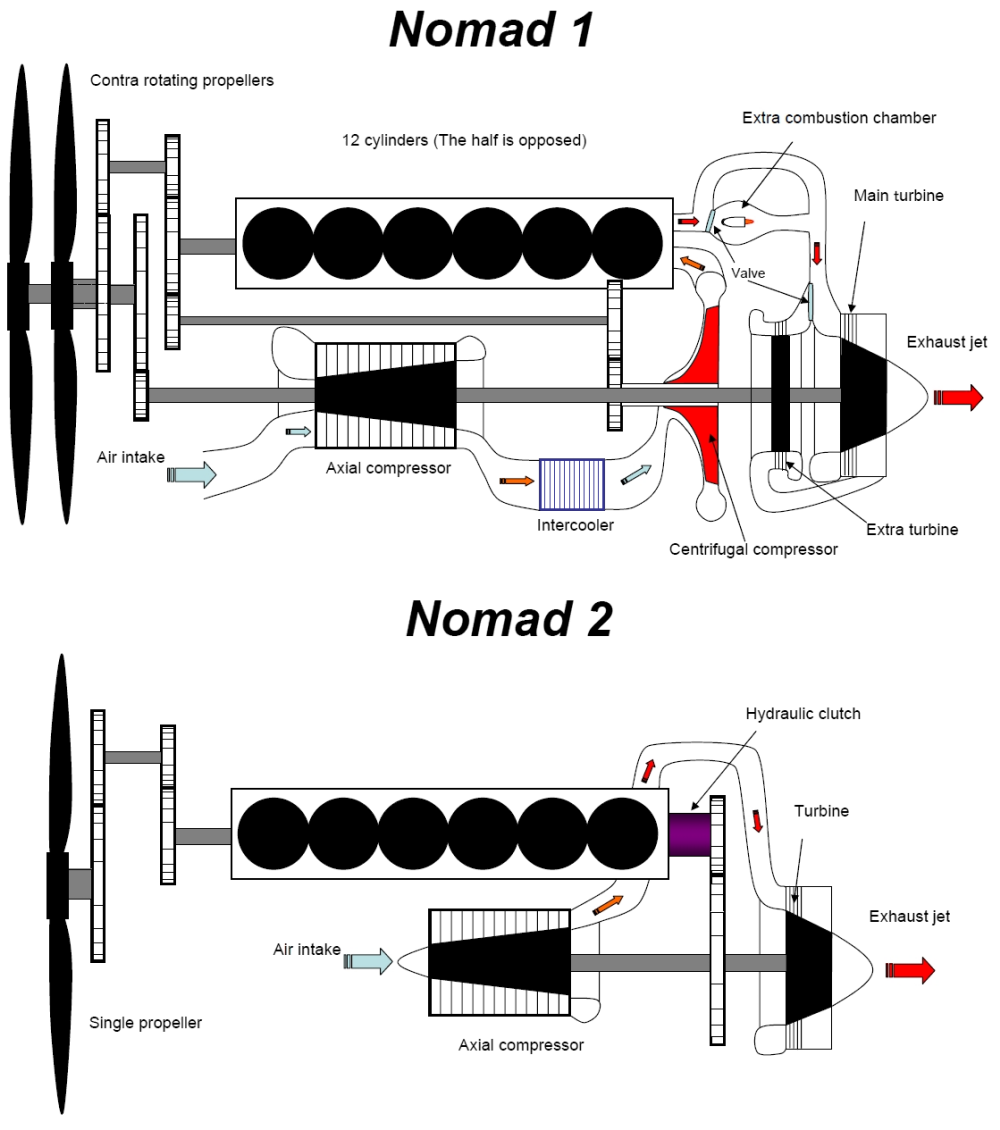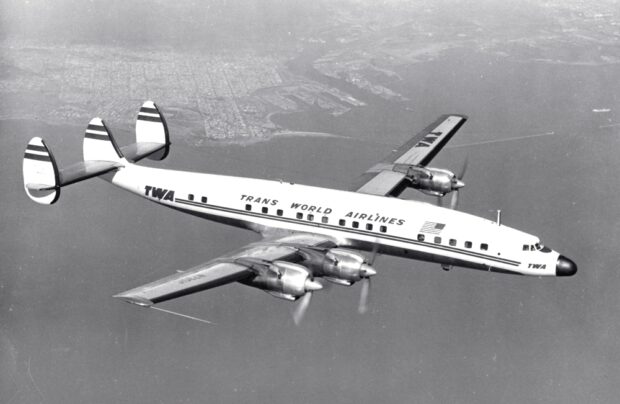The Douglas DC-7 and Lockheed Starliner were the Superprops of airliners. They used Wright Turbo Compound Engines which at first glance appear to be in violation of the laws of physics.
A turbo-compound engine is a reciprocating engine that employs a turbine to recover energy from the exhaust gases. Instead of using that energy to drive a turbocharger as found in many high-power aircraft engines, the energy is instead sent to the output shaft to increase the total power delivered by the engine. The turbine is usually mechanically connected to the crankshaft, as on the Wright R-3350 Duplex-Cyclone, but electric and hydraulic power recovery systems have been investigated as well.
As this recovery process does not increase fuel consumption, it has the effect of reducing the specific fuel consumption, the ratio of fuel use to power. Turbo-compounding was used for commercial airliners and similar long-range, long-endurance roles before the introduction of turbojet engines. Examples using the Duplex-Cyclone include the Douglas DC-7B and Lockheed L-1049 Super Constellation, while other designs did not see production use.
Concept
Most piston engines produce a hot exhaust that still contains considerable undeveloped energy that could be used for propulsion if extracted. A turbine is often used to extract energy from such a stream of gases. A conventional gas turbine is fed high-pressure, high-velocity air, extracts energy from it, and leaves as a lower-pressure, slower-moving stream. This action has the side-effect of increasing the upstream pressure, which makes it undesirable for use with a piston engine as it increases the back-pressure in the engine, which decreases scavenging of the exhaust gas from the cylinders and thereby lowers the efficiency of the piston portion of a compound engine.
Through the late 1930s and early 1940s one solution to this problem was the introduction of “jet stack” exhaust manifolds. These were simply short sections of metal pipe attached to the exhaust ports, shaped so that they would interact with the airstream to produce a jet of air that produced forward thrust. Another World War II introduction was the use of the Meredith effect to recover heat from the radiator system to provide additional thrust.

Diagram showing a true turbo-compound at the bottom, and a gas turbine loosely coupled to a piston engine at the top
By the late-war era, turbine development had improved dramatically and led to a new turbine design known as the “blowdown turbine” or “power-recovery turbine”. This design extracts energy from the momentum of the moving exhaust, but does not appreciably increase back-pressure. This means it does not have the undesirable effects of conventional designs when connected to the exhaust of a piston engine, and a number of manufacturers began studying the design.
Top Photo: A Trans World Airlines Lockheed L-1649 Starliner (civil registration N7301C) in flight in the late 1950s or the early 1960s, during a test flight.
Sources: YouTube; Wikipedia

